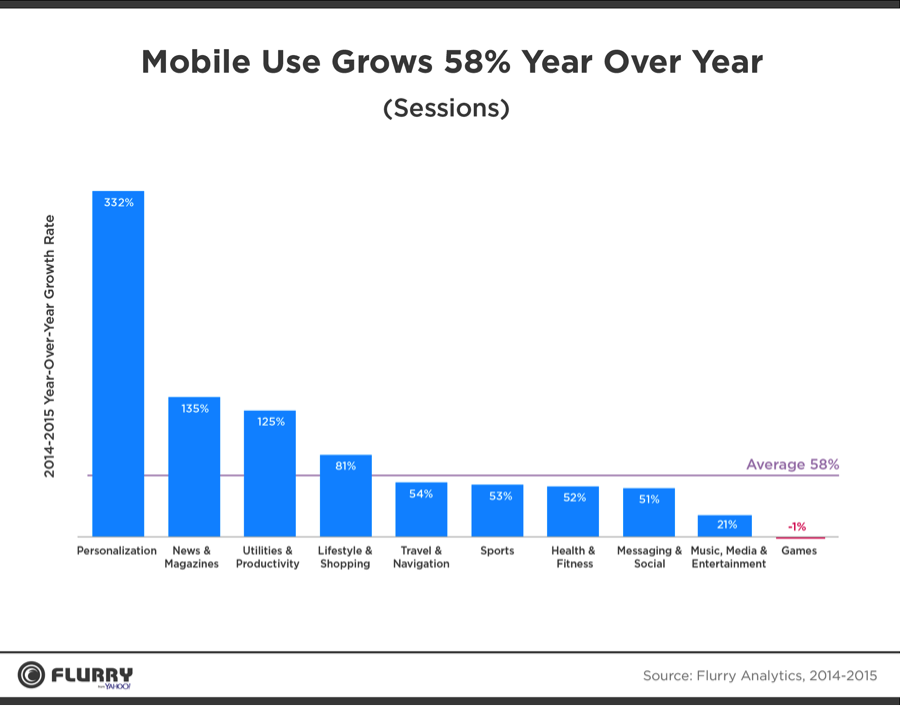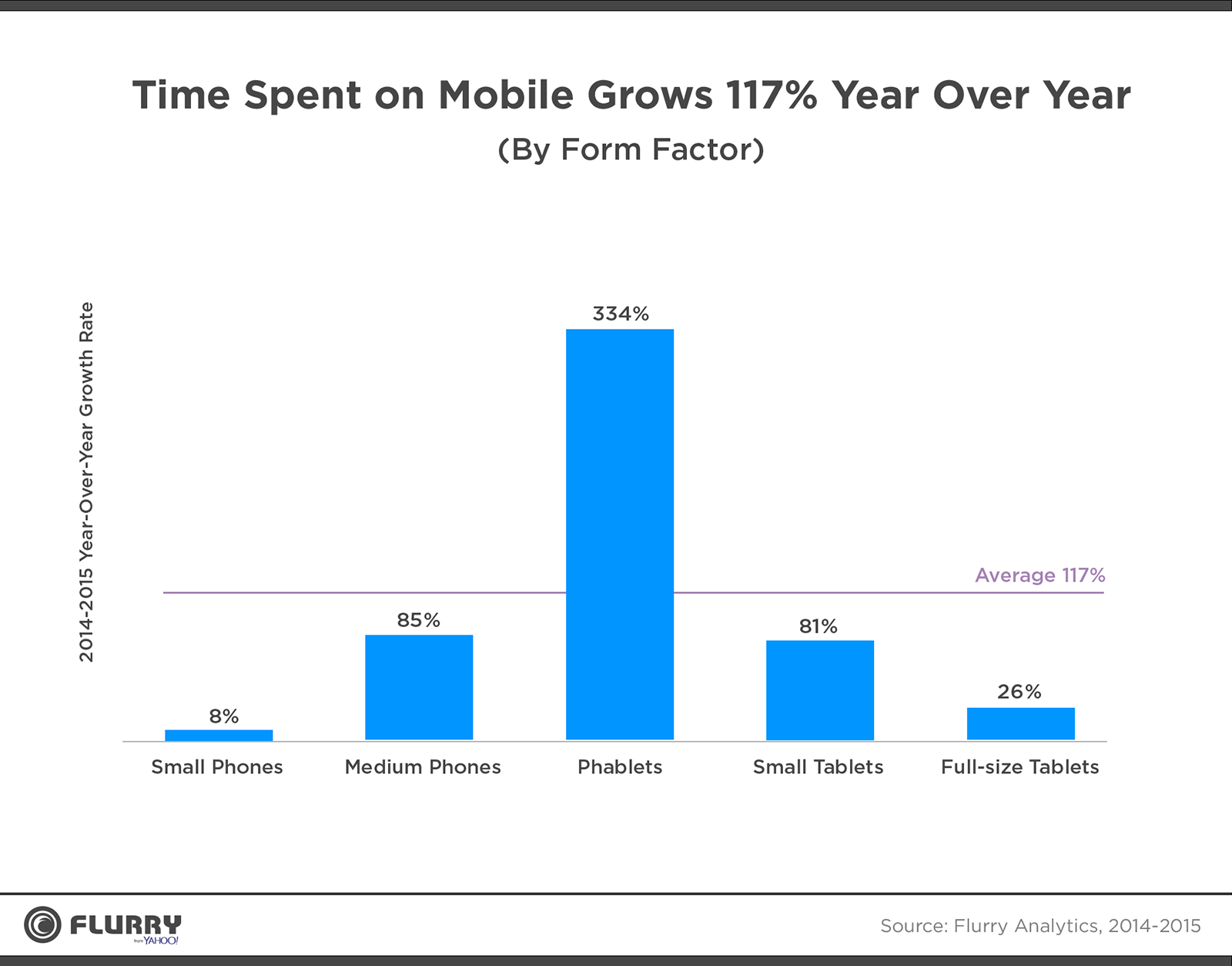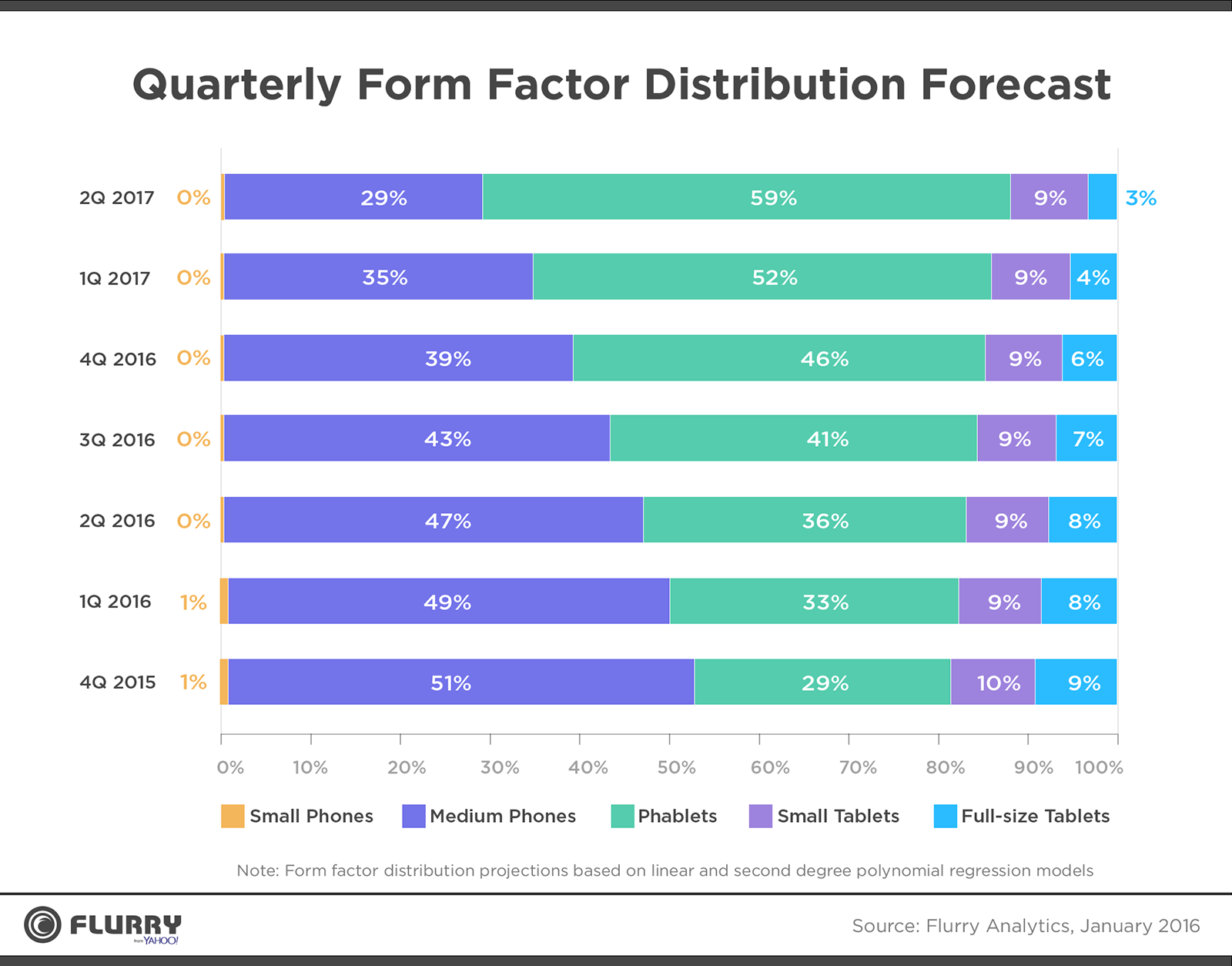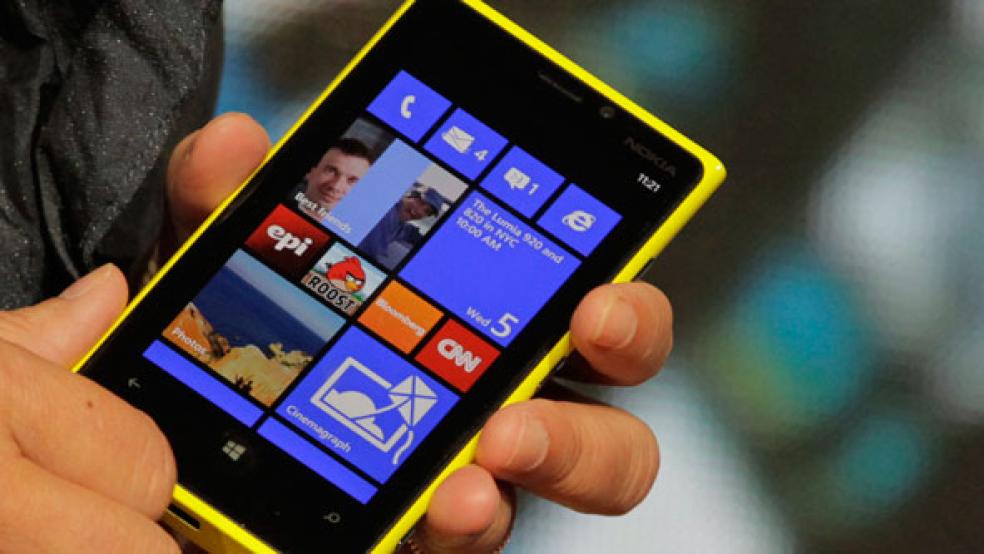Oxford Dictionaries apparently had good reason for forsaking the entire English language and instead making its 2015 “Word of the Year” an emoji, the “Face with Tears of Joy”: The use of emoji keyboard apps exploded last year, part of a boom in smartphone personalization, according to a new study by Flurry, Yahoo’s mobile analytics service.
Overall, mobile app usage grew by 58 percent last year, down from 76 percent in 2014 and 103 percent in 2013 — a sign of how quickly the mobile market is maturing, Flurry’s Simon Khalaf said in a Tumblr post. Pretty much everyone has a smartphone now, so more of the growth in app use is coming from existing users rather than new iPhone or Android owners. Flurry estimates that 40 percent of the 2015 growth came from existing users, compared with 20 percent in 2014 and 10 percent the year before.
In other words, as Flurry describes it, there’s been a giant uptick in the number of mobile addicts.
Related: Some Medical Apps May Not Be So Good for Your Health
The effects on the mobile landscape have been dramatic: Every app category Flurry tracks showed year-over-year growth, with the exception of gaming, which saw a 1 percent decline. As people look to personalize their devices, they’re turning to emoji keyboards, which allow users to customize messages to one another across messaging apps like Snapchat, WhatsApp, Facebook Messenger and others. One example of an exceedingly popular emoji app is Kim Kardashian’s ‘Kimoji.’ The app catapulted to the top spot in Apple’s AppStore the day it launched.
The number of personalization app “sessions,” defined as a user opening an app, grew by more than 330 percent, according to Flurry. Other app categories that saw above average growth last year include news and magazines, productivity and lifestyle and shopping.

Flurry’s study also found that the emergence of so-called phablets — smartphone/tablet hybrids — has contributed in a big way to our mobile addiction, making it more enjoyable to consume media on our handheld devices. The growth in use of news and magazine apps on phablets, for example, was nearly five times that on all mobile devices.

And the phablet fad is only going to keep growing, Flurry projects. Over the holiday season, more than a quarter of all new devices were phablets, while half of all Android devices were. Flurry predicts that smartphones with larger screens will be the dominant mobile device by October of next year. It also forecasts that old-school small phones will essentially be extinct by the second quarter of this year — which means that Oxford might want to start thinking about which emoji will be the 2016 word of the year.
Related: Mobile Gaming Will Be a $29 Billion Market by 2016






